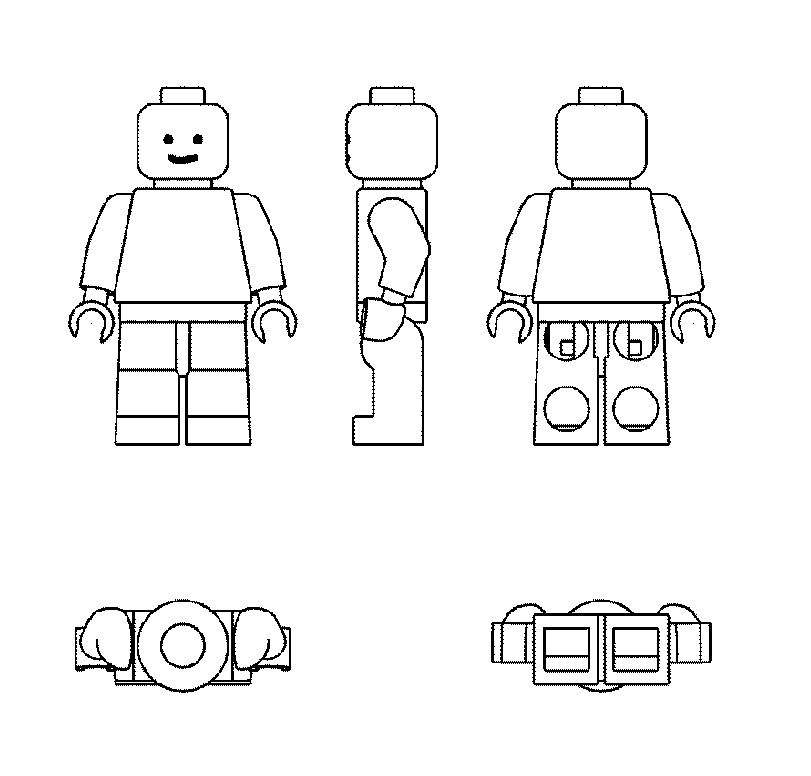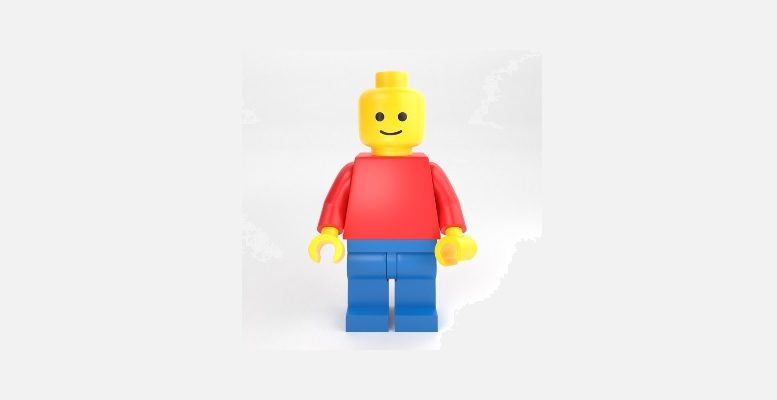In a decision to the appeal against refusal to TM App no. 2017-138422 for the 3D shape of Lego figures in class 28, the Japan Patent Office (JPO) did not side with Lego Juris A/S and found the 3D mark is inherently descriptive and has not acquired distinctiveness in relation to toys.
[Appeal case no. 2019-13906, Decision date: January 6, 2022]
LEGO 3D Figure mark
Toy giant, Lego Juris A/S applied to the JPO to register a 3D mark, showing the Lego figure seen from the front, side, back, top, and beneath (see below), for “games and playthings” and other goods in class 28 on October 20, 2017.

Article 3(1)(iii)
Trademark Examination Guideline (TEG) pertinent to Article 3(1)(iii) of the Japan Trademark Law provides a mark shall be subject to the article if it solely consists of a shape that is recognized by consumers as a shape of goods or equivalent, namely “not go beyond the scope of the descriptive shape of goods”.
TEG stipulates criteria to assess the recognition.
- Where 3D shape is admittedly adopted for a purpose of enhancing function or the aesthetic appeal of goods, the shape is deemed to remain within the scope of descriptive shape of goods.
- Even though 3D shape has specific features by means of unique alteration or decoration, it is still considered not to go beyond the scope of descriptive shape of goods, where consumers assume such alteration or decoration attributable to enhancing function or the aesthetic appeal of goods.
The JPO examiner totally rejected the applied mark based on the article by finding the shape remains the scope of the descriptive shape of ‘human figure toys’ in class 28.
Lego Juris A/S filed an appeal against the rejection on October 18, 2019.
JPO decision
The JPO Appeal Board affirmed the findings of the examiner and found the 3D mark does not go beyond the scope of the descriptive shape of the goods in question by stating that:
- Plenty of human shape figures have been promoted for sale by competitors in relevant business field.
- There is less necessity to adopt specific configuration in making a human shape figure provided that it has a basic skeleton of head, body, arms, and legs.
- The Board has a reason to believe 3D shape of the applied mark is adopted enabling (i) to wear several caps and hair wigs, (ii) to get hold of various tools at hand, (iii) to stand still in display and play.
- If so, relevant consumers would assume the whole shape and its unique decoration of Lego figure attributable to enhancing function or the aesthetic appeal of the toy.

Taking into consideration that the actual 3D shape of Lego figures are considerably different from the applied mark, and the word mark “LEGO” has been constantly used on catalogs, packages, and advertisement material adjacent to the applied mark, the Board has a reasonable doubt if the 3D shape per se has acquired distinctiveness as a source indicator of LEGO toys.
Based on the foregoing, the JPO Appeal Board decided to dismiss the appeal in contravention of Article 3(1)(iii).

Masaki MIKAMI, Attorney at IP LAW – Founder of MARKS IP LAW FIRM

